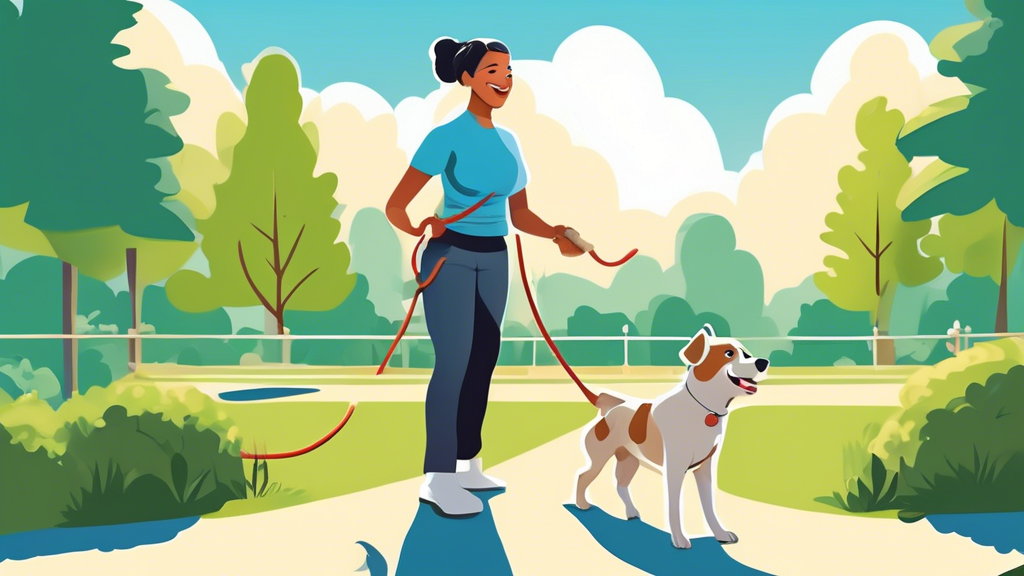Using a check cord can be a highly effective method in dog training, especially for puppies and young dogs who are learning the basics of obedience. A check cord is a long, durable leash that allows handlers to control their dogs from a distance, helping to solidify commands and maintain control in various environments. In this article, we’ll cover essential tips and techniques for using a dog check cord effectively, ensuring both you and your dog benefit from this valuable training tool.
Choosing the Right Check Cord
The first step in incorporating a check cord into your training routine is selecting the right one. Check cords come in various lengths, materials, and thicknesses. Here are a few considerations:
- Length: Most check cords range from 20 to 50 feet. For beginners, a 20-30 foot cord is usually sufficient, offering enough range without being too cumbersome.
- Material: Nylon and biothane are popular choices. Nylon cords are lightweight and affordable, while biothane cords are durable, easy to clean, and have a better grip.
- Thickness: Depending on your dog's size and strength, choose a cord that can withstand their pulling force without breaking or causing discomfort.
Introduction to the Check Cord
Before starting any training exercises, it’s important to get your dog accustomed to the check cord. Here’s a step-by-step process:
- Let Your Dog Explore: Allow your dog to sniff and investigate the check cord. This helps reduce any initial anxiety or fear associated with the new equipment.
- Attach the Cord: Clip the check cord to your dog’s collar or harness. Ensure it’s secure but not too tight, providing freedom of movement without causing discomfort.
- Supervised Free Time: Allow your dog to drag the cord around in a safe, enclosed area. Supervise them to prevent tangling and other accidents, helping them get used to the feel of the check cord.
Basic Training Commands
Once your dog is comfortable with the check cord, you can start incorporating basic obedience commands. The check cord allows you to maintain control while giving your dog the freedom to learn and explore. Here are some fundamental commands to teach:
- Come: Hold the end of the check cord and let your dog wander away. Once they are at a distance, gently tug the cord while calling come. When they return, reward them with praise or treats.
- Sit: With your dog on the check cord, command sit while applying gentle pressure on the cord. Once they comply, release the pressure and reward them.
- Stay: Command your dog to sit or down and use the check cord to prevent them from moving. Gradually increase the distance and duration, always rewarding compliance.
Advanced Training Techniques
As your dog becomes more proficient with basic commands, you can use the check cord for more advanced training exercises:
- Recall in Distractions: Practice the come command in various environments with increasing distractions. The check cord ensures you maintain control while your dog learns to respond in different settings.
- Directional Commands: Teach your dog to go left, right, or in specific directions using the check cord. Combine verbal commands with gentle tugs to guide their movement.
- Off-Leash Simulations: Gradually transition to off-leash training by extending the check cord's range, giving your dog more freedom while still maintaining control.
Safety and Best Practices
When using a check cord, safety should always be your top priority. Follow these best practices to ensure a positive training experience:
- Supervision: Never leave a dog unattended with a check cord attached, as it can pose a strangulation or entanglement risk.
- Environment: Use the check cord in open, safe areas free of obstacles. Avoid busy streets or environments where your dog could get hurt or tangled.
- Positive Reinforcement: Always reward your dog for good behavior. Positive reinforcement encourages learning and strengthens the bond between you and your pet.
Conclusion
A check cord can be an invaluable tool for training your dog, helping to establish obedience and responsiveness in various environments. By choosing the right cord, introducing it properly, and incorporating it into your training routine with patience and positive reinforcement, you can effectively guide your dog through both basic and advanced commands. With time and consistent practice, the check cord can help pave the way for a well-behaved and happy canine companion.

